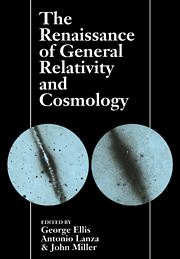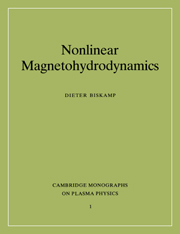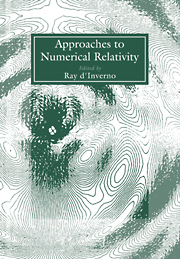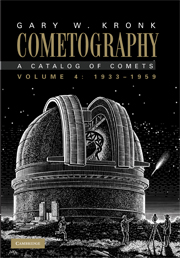Refine listing
Actions for selected content:
17000 results

Mars: An Introduction to its Interior, Surface and Atmosphere
-
- Published online:
- 15 December 2009
- Print publication:
- 10 January 2008

The Renaissance of General Relativity and Cosmology
- A Survey to Celebrate the 65th Birthday of Dennis Sciama
-
- Published online:
- 15 December 2009
- Print publication:
- 25 November 1993

Nonlinear Magnetohydrodynamics
-
- Published online:
- 15 December 2009
- Print publication:
- 30 September 1993

Approaches to Numerical Relativity
-
- Published online:
- 15 December 2009
- Print publication:
- 10 December 1992
2 - Simple applications of Bayesian methods
-
-
- Book:
- Bayesian Methods in Cosmology
- Published online:
- 11 April 2011
- Print publication:
- 10 December 2009, pp 36-56
-
- Chapter
- Export citation
Part II - Applications
-
- Book:
- Bayesian Methods in Cosmology
- Published online:
- 11 April 2011
- Print publication:
- 10 December 2009, pp 165-166
-
- Chapter
- Export citation
6 - Signal separation in cosmology
-
-
- Book:
- Bayesian Methods in Cosmology
- Published online:
- 11 April 2011
- Print publication:
- 10 December 2009, pp 126-164
-
- Chapter
- Export citation
5 - Terrestrial planet formation
-
- Book:
- Astrophysics of Planet Formation
- Published online:
- 05 June 2012
- Print publication:
- 10 December 2009, pp 146-184
-
- Chapter
- Export citation
4 - Model selection and multi-model inference
-
-
- Book:
- Bayesian Methods in Cosmology
- Published online:
- 11 April 2011
- Print publication:
- 10 December 2009, pp 79-98
-
- Chapter
- Export citation
Frontmatter
-
- Book:
- Bayesian Methods in Cosmology
- Published online:
- 11 April 2011
- Print publication:
- 10 December 2009, pp i-iv
-
- Chapter
- Export citation

The Martian Surface
- Composition, Mineralogy and Physical Properties
-
- Published online:
- 10 December 2009
- Print publication:
- 05 June 2008

Cometography
- A Catalog of Comets
-
- Published online:
- 10 December 2009
- Print publication:
- 11 December 2008
2 - Protoplanetary disk structure
-
- Book:
- Astrophysics of Planet Formation
- Published online:
- 05 June 2012
- Print publication:
- 10 December 2009, pp 34-64
-
- Chapter
- Export citation
Index
-
- Book:
- Astrophysics of Planet Formation
- Published online:
- 05 June 2012
- Print publication:
- 10 December 2009, pp 281-284
-
- Chapter
- Export citation
10 - Bayesian analysis of cosmic microwave background data
-
-
- Book:
- Bayesian Methods in Cosmology
- Published online:
- 11 April 2011
- Print publication:
- 10 December 2009, pp 229-244
-
- Chapter
- Export citation
4 - Planetesimal formation
-
- Book:
- Astrophysics of Planet Formation
- Published online:
- 05 June 2012
- Print publication:
- 10 December 2009, pp 109-145
-
- Chapter
- Export citation
List of contributors
-
- Book:
- Bayesian Methods in Cosmology
- Published online:
- 11 April 2011
- Print publication:
- 10 December 2009, pp ix-x
-
- Chapter
- Export citation
Preface
-
- Book:
- Bayesian Methods in Cosmology
- Published online:
- 11 April 2011
- Print publication:
- 10 December 2009, pp xi-xii
-
- Chapter
- Export citation
Contents
-
- Book:
- Bayesian Methods in Cosmology
- Published online:
- 11 April 2011
- Print publication:
- 10 December 2009, pp v-viii
-
- Chapter
- Export citation
Contents
-
- Book:
- Astrophysics of Planet Formation
- Published online:
- 05 June 2012
- Print publication:
- 10 December 2009, pp v-viii
-
- Chapter
- Export citation
